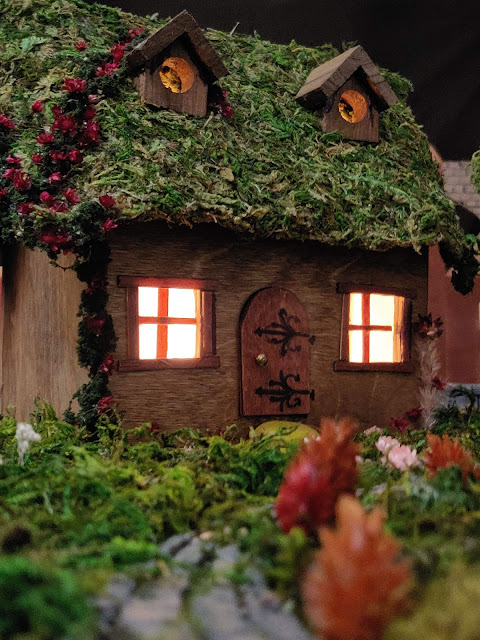I had a last second request the other night to help shoot a social media promo for an artist friend,
Daria Aksenova. The client was only expecting something shot on a phone, but since my new RED Komodo was sitting around, the video got a little upgrade.
Shot in 6K 16:9 sensor mode, 2K ProRes in portrait orientation, as this was specifically for an Instagram Story. I used my Sigma 18-35mm lens, mostly at the 35mm end. I monitored with the standard RWG-> Rec709 transform, but used the Panavision DXL LUT in Premiere and that's all the color grading I did other than slightly warming up the other shots to match the second. The first two shots are lit with just a single desk lamp and in the first picture I used my AAA pocket flashlight to shine on the foreground material to give it some bokeh. The other two shots were lit with a single Kino Select 30.
I recorded to ProRes as I haven't tested out the Komodo r3d workflow on my laptop and didn't have the time to lose if there were issues (under 3 hours from deciding to shoot the promo with no shot list to delivering the files - one 15 second cut and one 30 second cut). Fortunately it was only 4 shots and the client didn't want audio, as they wanted to add their own music. I'm used to shooting for exactly what I want (rather than "change it in post") so not having the added flexibility of r3d wasn't a huge deal for me.
If I had had more time to figure out what to shoot, I would have timed the last shot a little differently, but oh well. What can you do?
As for the Komodo, I tried using the autofocus feature for the shot seen in the second photo, keeping the pencil in focus as I pushed in. It didn't work very well as it kept hunting around. I'll admit, it is a fairly challenging autofocus situation. I ended up just locking my focus on my "b" mark and let the pencil come into focus as I pushed in. I think it worked better that way anyway than keeping the pencil sharp through the whole move.
I didn't exactly push the dynamic range too hard other than the first shot, with the dark foreground and shadow side while also having a sliver of bare lightbulb in the lamp visible. I think the highlight rolloff in that very bright part held up well, with no harsh clipping, considering I was exposing for the darker portion of the image. Most of my shoots over the past few years have been Alexa (Classic, Mini or Mini LF), so I was surprised that I could get a similar looking image out of the Komodo with very little effort. Again, I wasn't exactly pushing the sensor to the limits or anything, but it has a nice, organic feel and pleasing colors.
Would the Komodo be my first pick as an A-Cam for bigger productions? Maybe, maybe not. The extremely limited frame rates (very few off-speed options, even at lower frame rates) and limited aspect ratios straight from the camera (only 6K offers a 16:9 option right now and there is no anamorphic support yet) keep it fairly limited, though it's likely only a matter of time before more options get added. Once those are addressed, I don't see any reason why it's not a perfectly viable option for anything that doesn't need super-slow motion shots. If I need to overcrank a lot, I'd use something else. But the rest of the time? I think the Komodo will get the job done just fine.





